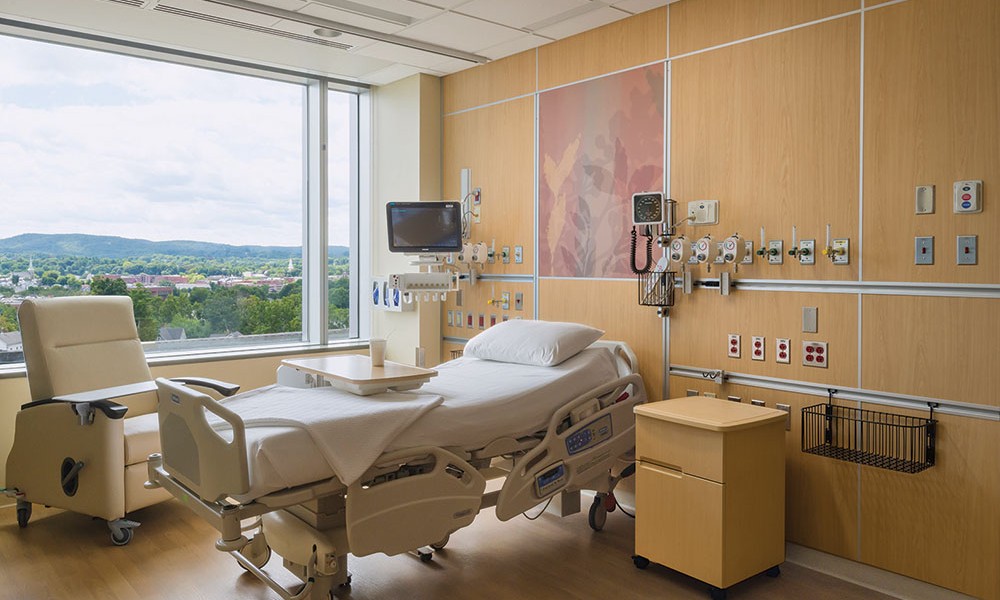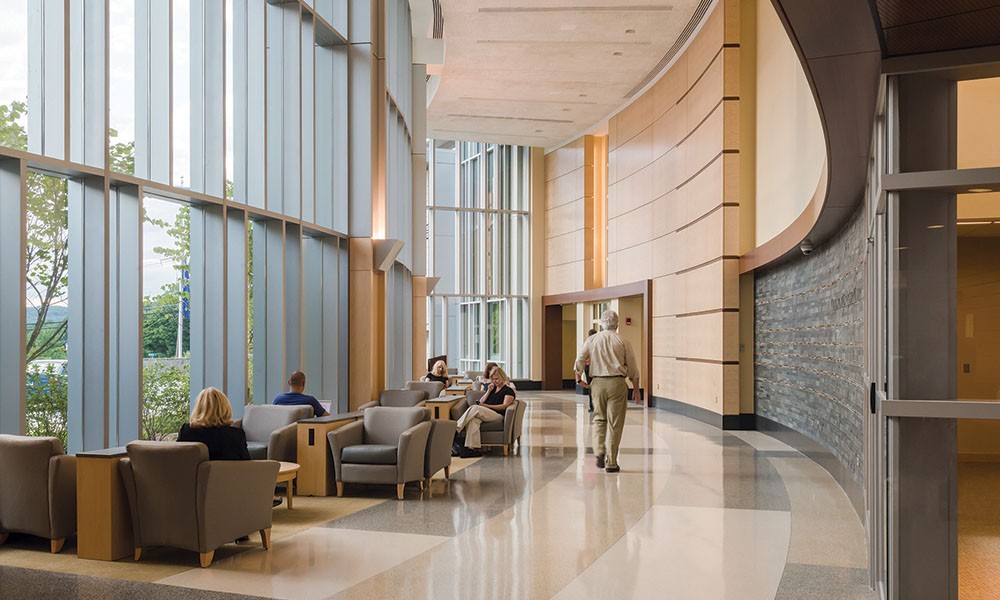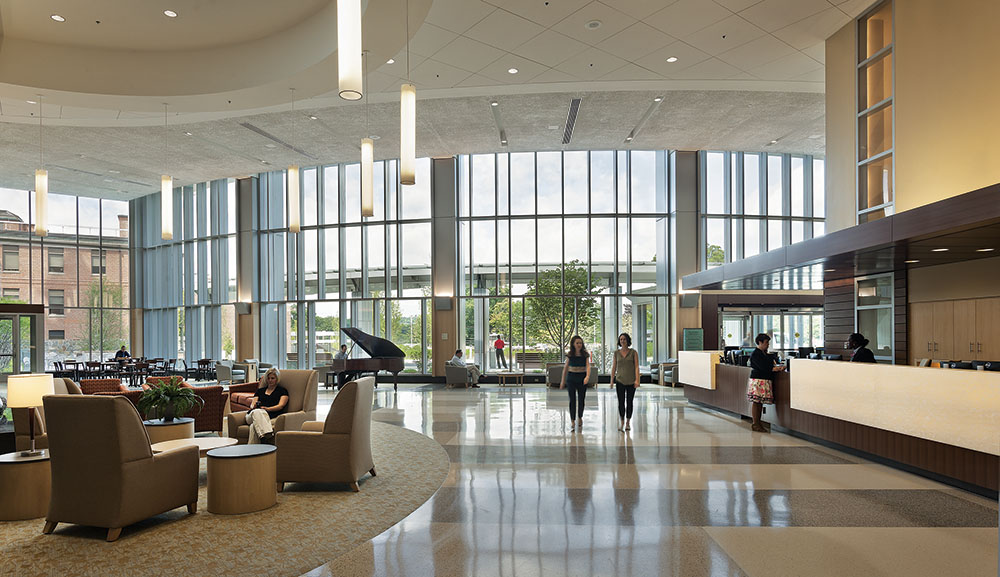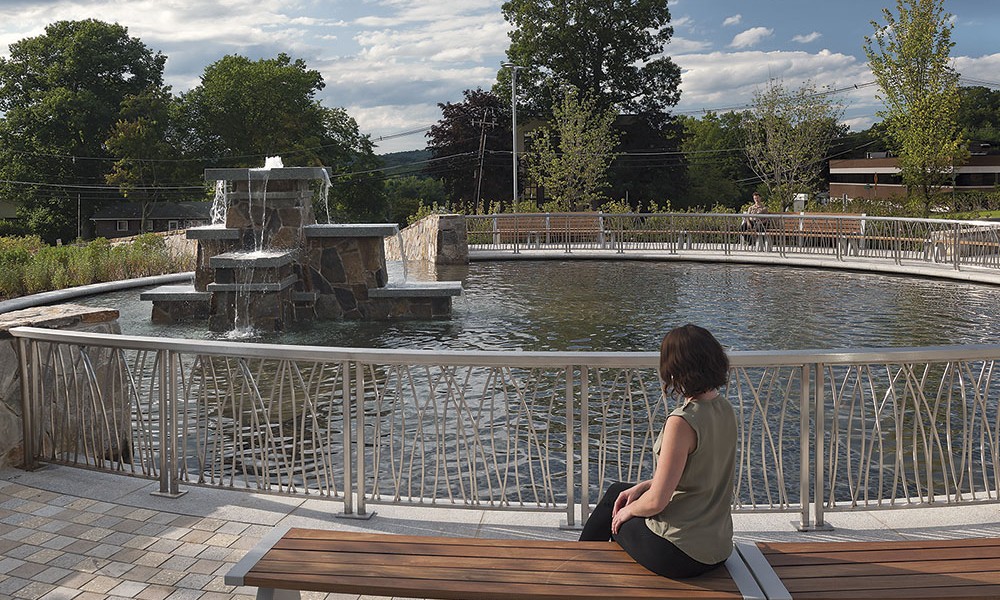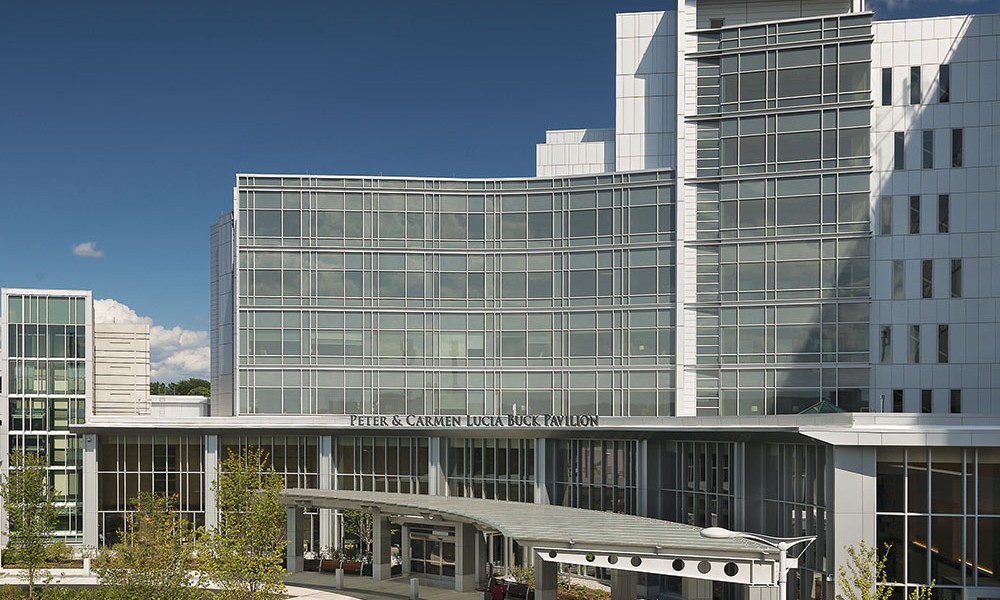Stewards of Green: Danbury Hospital’s new patient tower
The practice of sustainable design was initiated nearly 50 years ago by landscape architects who focused on design respectful of the natural environment and a balanced ecology. This was followed by a national wake-up call to conserve energy caused by the 1970s’ “oil crisis,” which was largely economically and politically driven.
Fast forward to the new millennium; we now understand the importance of the global need for sustainable design and self-sufficiency to maintain a healthy planet. The toolbox of innovative methods, materials and equipment continues to increase at a rapid rate, as do the uses for them.
Today, sustainable design has advanced beyond organizational needs, to adding value and enhancing community viability. Hospitals such as Danbury Hospital, a member of the Western Connecticut Health Network, already stewards of patient well-being, are taking on the additional responsibility of helping to maintain, and add to, the well-being of their communities.
Danbury Hospital’s new 300,000-square-foot Peter and Carmen Lúcia Buck Pavilion was envisioned to enable the hospital to transform the performance, experience and perception of the overall institution. Through years of due diligence in its sustainability efforts, the hospital was able to include more advanced sustainability efforts in this patient tower, which will extend to the community at large.
It was important to the hospital to take a holistic approach to the new building’s design — looking at the value to patients, employees and the community — and incorporate multiple amenities and functionality that will provide long-term benefits. The hospital, a private entity, is not held to the same Connecticut High Performance Standards for sustainability that public construction projects require. However, as part of its sustainability strategy, it chose to exceed the standards required by the state and pursue LEED Gold certification. Sustainability initiatives, defined by the U.S. Green Building Council, include:
Energy
As part of the hospital’s master plan, an onsite cogeneration power plant was constructed. The plant will reduce the demand on the local power grid by generating 80 percent — the equivalent of 7,221,211 pounds of coal burned — of the hospital’s electrical demand and all of its domestic hot water. By using natural gas instead of coal and diesel, emissions are significantly reduced.
Continuing the effort to reduce impact on the environment, refrigerants with low-ozone depleting properties are used for cooling and refrigeration equipment. In the new addition, a high-performance glazing system is tuned to the exposures. For instance, the western exposure is treated with a special form of etching called “fritting” to reduce heat gain potential, while maintaining the view to the outdoors. The new cogeneration plant will also pay for itself in energy savings in less than five years. The result is the building’s energy performance is 37 percent better than if it was built to baseline building-code requirements.
Water
Fresh water is critical to survival, and hospitals use a lot of it. In an effort to put less strain on the local water supply, as directed by local officials, the hospital installed water-conserving toilets, urinals and low-flow faucets, which equate to 2,337,033 fewer gallons of water used annually — a 58.42 percent savings. Other opportunities healthcare facilities can take advantage of to save water include capturing stormwater and reusing cooling tower condensate.
Site
Creating a focal point to establish the new hospital entrance and unify the entire facility, in addition to providing a calm and welcoming environment, was the catalyst for the tower’s entry design. Healing gardens are often used to enhance interior views. In this case a healing garden centerpiece sets the stage.
The surrounding neighborhood was protected from the effects of the new construction with the implementation of erosion- and sedimentation-control measures. A permanent stormwater filtration system removes particulates and protects streams and adjacent bodies of water in the surrounding community. This feature provides long-term benefits to the environment.
By building in an urban environment, the institution saves greenfields from development. The new tower increased the hospital’s square footage by about a third, to 1.1 million square feet, without changing existing campus boundaries. The facility is supporting the local economy, making good use of the existing infrastructure and preventing unnecessary duplication of services. Building within a neighborhood with at least 10 supporting services — from grocery stores and dry cleaners to the post office and drug stores — provides a synergistic relationship between local merchants and the hospital.
Providing amenities such as bicycle racks and priority parking for low-emitting and fuel-efficient vehicles reduces carbon emissions. The hospital encourages healthy lifestyles among employees, while reducing carbon emissions and traffic congestion. The addition of charging stations would enhance this effect.
Creating a connection to the outdoors with the central healing “oasis” provides patients and staff a place of repose, reflection and rehabilitation. The abundance of native, adaptive non-invasive plantings and the use of high-albedo materials to construct the parking garage addition, highly reflective white roofs and future vegetative green roofs, help reduce the heat island effect that would have come from extensive surface parking.
Materials
To minimize the environmental impact of hospital waste on the environment, a user-friendly, single-stream recycling program for staff and patients was implemented. With the single-stream method, all recyclables are collected in one place, simplifying the collection process and making it easier for all employees, visitors and patients to participate. To further reduce the effect of waste on the environment, 95 percent of the construction waste was reused, recycled or diverted from a landfill. This represents approximately 3,153 tons of construction material. This is a percentage that is rarely achieved and gives the project an exemplary performance credit toward LEED certification.
Indoor air quality
Providing a high level of indoor environmental quality is important for all inhabitants. By increasing the airflow rate using variable air volume controls and closely monitoring CO2, the hospital can more accurately control the levels of fresh air to re-circulated air ratios. This provides better indoor air quality.
During construction, buildings aren’t always protected from the elements. Great care was taken to protect absorptive material from moisture, minimizing mold growth. Low-emitting interior materials were selected to minimize harmful emissions from paint, adhesives, sealants, flooring systems and composite woods. In an effort to enhance patient and staff comfort, individual temperature and light controls were implemented throughout the facility.
The efforts used by Danbury Hospital are more than good environmental practices; from an energy-use perspective, they have major effect on the bottom line and will reduce operating costs by approximately 36 percent annually.
Posted October 2, 2014
More Articles:
- 5-Story Patient Tower Opens at Providence Cedars-Sinai Tarzana Medical Center
- Grand Opening Held for PrairieCare Youth and Young Adult Psychiatric Hospital Expansion Project
- Construction Starts on Strong Memorial Hospital Expansion Project
- New Facility Planned for BayCare’s St. Joseph’s Children’s Hospital
- CxA Workshop & Exam
Apr 29, 2024 – Apr 30, 2024 - EMP Seminar & Exam at CxEnergy 2024
Apr 29, 2024 – Apr 30, 2024 - CxEnergy
Apr 29, 2024 – May 2, 2024 - PHCC West 2024
Apr 29, 2024 – May 2, 2024 - Lean in Design Forum 2024
May 1, 2024 – May 2, 2024 - IFMA’s Facility Fusion Conference & Expo
May 5, 2024 – May 7, 2024 - ASHE Academy 2024
May 6, 2024 – May 10, 2024


